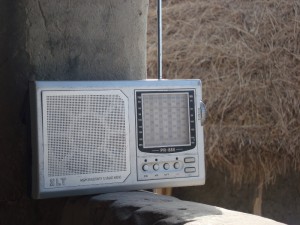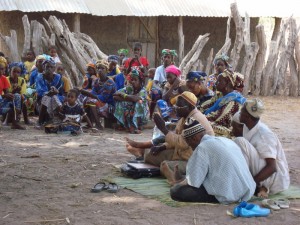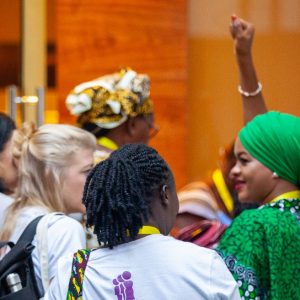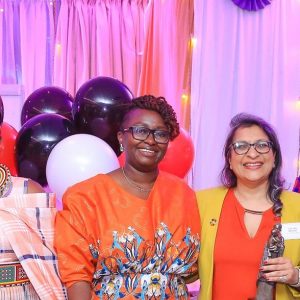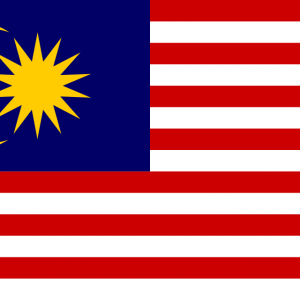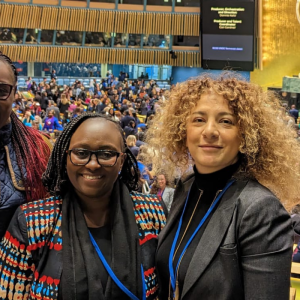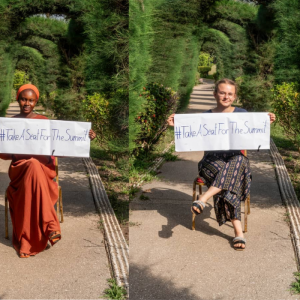Story by Allyson Fritz, Tostan
It isn’t often that I find myself dialing the knob on an actual radio and adjusting its antenna to catch the best reception. The kind of radio that I am used to is usually streaming from the internet or playing from the speakers of a car, and it is primarily used for entertainment. Last week, however, I gained a much deeper appreciation for the impact that a small grey box with an antenna can have on a movement as big as the abandonment of female genital cutting (FGC).
Last week I joined the Tostan social mobilization team as they visited communities throughout Kolda, Senegal. Supported by Orchid Project, this team of six social mobilization agents was conducting village meetings to share information on FGC, child/forced marriage, and other human rights topics.
Every night in the villages I stayed in, people would flee the heat of their houses and gather outside around their communal radio to listen to the news, music, and talk shows emanating from the speakers. During the day, the radio was on while people chatted over tea or worked outside, with broadcasts in local languages like Pulaar and Mandinka. Many of the community and regional radio stations broadcast Tostan radio programs that share information on human rights, health and hygiene, and community empowerment.
I didn’t think much of it until I started hearing community members from every village we visited talking about what they heard on the radio. As the social mobilization agents began to speak about FGC during the village meeting in Sinthiang Sakou, the village chief shared that he knew it was a harmful practice from listening to the radio. Dado, a woman from the same village, said that on the radio she learned about the negative consequences resulting from the practice. In Sinthiang Doullel, the village chief said that his village had also heard about the dangers of FGC while listening to the radio.
When the social mobilization team comes into a village who has already been introduced to the idea of FGC abandonment on the radio, it makes a big difference. The community will have already had the opportunity to reflect on the idea, and the team can then answer questions, address misunderstandings, and present additional information.
The radio is an excellent supplement to in-person social mobilization, though it is not a replacement. Communities often tell the social mobilization agents that they had been told or heard that they were supposed to abandon FGC because it was illegal. However, they share that it wasn’t until the social mobilization team came into their village to explain human rights and the health concerns and rationale behind the law that they understood why it was important to discontinue the practice. This initial discussion provides a foundation for future dialogue with their social network on the importance of abandoning FGC.
The radio plays a critical role in the dissemination of information about FGC throughout the many isolated communities in the region. Mixed in with popular music that is also broadcasted, these radio programs can help accelerate the movement for ending harmful practices and improve the lives of thousands of women and girls.
This is a reproduction of an article originally posted by Tostan here.

